Findings & Footnotes July 2016
- The Sectarianism of the Islamic State, published last month by the Carnegie Endowment for International Peace, presents a thorough examination of the tangled roots of the ideologies and theologies that make up this unorthodox and lethal jihadist movement (whatever the secular motivations of its fighters). Hassan Hassan, author of the report, stresses that while the IS has a background in Wahhabism, a strict form of Islam, it is simplistic to blame any one ideology for the movement’s extremism. Especially interesting is the report’s section on how the IS relies on many clerics who may not support all its views but often are direct heirs of older movements, such as the Sahwa, which itself is a revolutionary variant of the Muslim Brotherhood. To download this report, visit http://carnegieendowment.org/2016/06/13/sectarianism-of-islamic-state-ideological-roots-and-political-context/j1iy

- Technological devices aiding prayer, called “prayer machines,” are the subject of a special section in the journal Material Religion (March). Prayer machines can be any devices that enable religious adherents to acquire greater skill in the execution of prayer or that measure the practitioner’s physical and mental states while praying. A lead article chronicles the long history of such devices, from Buddhist prayer wheels to coin-operative votive prayer candles to praying dolls, arguing that these machines helped sacralize the growing automation of everyday life. Today it is clearly Buddhism where such technology has flourished—especially in Japan—to include prayer wheels powered by solar energy, software with mantra chanting loops, and even a wallet with automated scripture-chanting chip that activates when opened. Another article looks at how strict Salafist Muslims have responded to a growth of technology-assisted prayer with rulings that range from approval to outright condemnation. For more information on this issue, visit http://www.tandfonline.com/loi/rfmr20#.V3vPqaRTGM8

- The July issue of the journal International Sociology is devoted to religion in cities of Asia. Co-editor Peter van der Veer argues in this issue, as elsewhere, that the relationship between the sacred and urban space is especially evident in Asia, though the subject remains off the agenda of urban sociologists and anthropologists (although geographers have been more receptive to this development). In the introduction to the issue, van der Veer and co-editor Daniel P. S. Goh write that the rapid urbanization of China has forced religions to adapt their practices to city life, but at the same time these believers create new innovations as they attempt to sacralize and take control of secular urban space vis-à-vis religious competitors and state management of religion.
The issue includes studies of urban protests in Hong Kong by religious groups against the Chinese state and consumer boycotts by Muslims against companies and the state in Singapore and Kuala Lumpur. In the face of rapid Islamicization in Indonesia, an article by Goh shows how evangelical Christians use mega prayer assemblies to claim their own share of the public space and “express their aspirations for a cosmopolitan Indonesia.” Other articles focus on less confrontational struggles, as in the study of young Koreans adopting a new form of urban Buddhism in Seoul that appropriates the drive for self-realization and capitalist consumption. For more information on this issue, visit http://iss.sagepub.com/
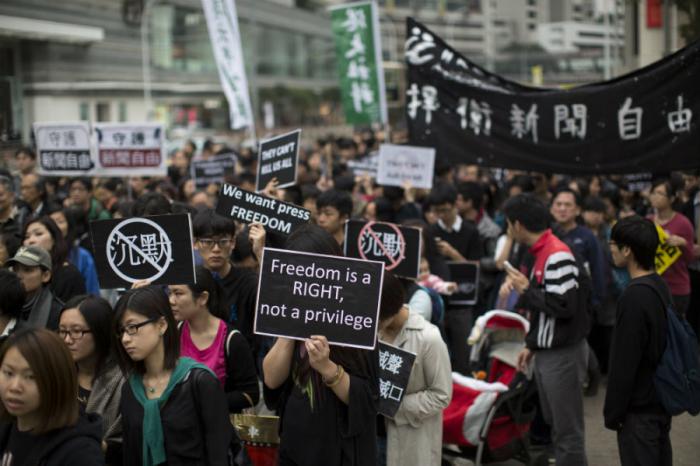
- While it may be the case that schism is more difficult and rarer in Roman Catholicism, as dissenters cannot easily replicate the papacy and other distinctive features of the church, that hasn’t stopped several groups from trying, according to the new book The Other Catholics (Columbia University Press, $29.95) by Julie Byrne. The independent Catholics the book investigates are a diverse lot, covering groups that broke off from Roman Catholicism in earlier periods, such as the Old Catholics and the Polish National Catholic Church, and more recent splits, including the Church of Antioch, the Ecumenical Catholic Church, and the Orthodox Church (the author concentrates on the left side of the spectrum rather than on the traditionalist right). Byrne holds that these groups, totaling about one million adherents at most, serve as laboratories of innovation to wider (or “big-body”) Catholicism as well as “black sheep” in the Catholic fold.
Focusing on the Church of Antioch, she clearly sees these churches’ openness to non-Christian sources (often based on esoteric teachings) as well as their support of women’s ordination and women bishops (though Antioch has several “conjugal” or married bishop couples) and gay rights as such innovations. Byrne devotes much of the book to profiling the bishops and other leaders of independent Catholic circles, tracing their journeys through Roman Catholicism and often more heterodox paths with considerable syncretism involved. But Byrnes also finds independent Catholicism facing several hurdles—there is only a trickle of liberal, dissenting Catholics moving to these churches (even if they may cooperate with them), and Antioch and several other bodies have experienced infighting and serious splits. Byrne concludes the book with a survey she conducted among independent Catholic members, which, among other findings, shows high proportions of ex-Roman Catholics, whites, highly educated, and LGBT (almost 40 percent) in its ranks, with only about 5 percent of its clergy receiving either full- or part-time salaries from their churches.
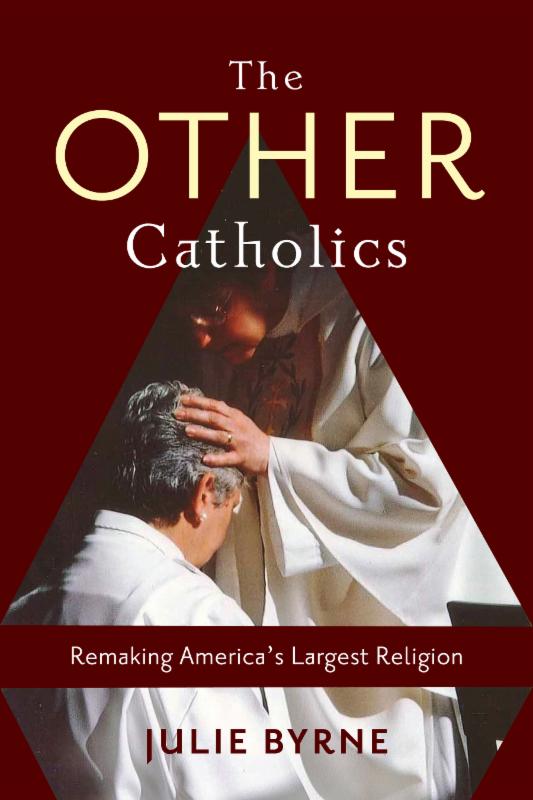
- Publishing books trying to understand or remedy the growing rate of religious non-affiliation has become a cottage industry. The recent book Choosing our Religion (Oxford University Press, $29.95) by Elizabeth Drescher, is one of the more in-depth treatments of the nones, with its ethnographic method having the advantage over survey research of allowing people to define themselves on a spectrum of quite religious to irreligious. Drescher notes how such “fuzziness” marks much of this disparate population, where even spiritual inclinations can vary on a day-to-basis and atheists sometimes report episodes of prayer. Since most of the subjects in the study, which also draws on focus groups, an online survey, and interviews of 219 people, are from Christian backgrounds, the author finds a pattern of ex-mainline nones drifting from their involvement gradually, with declining interest and motivation, while ex-evangelical nones leave with some anger toward their churches, and ex-Catholics exit the church feeling they were “hurt” by the institution.Drescher spends a considerable amount of space discussing the sites and activities that nones view as spiritually meaningful, and not surprisingly such places or objects are not explicitly religious. Everyday life and relationships are the main places where nones find spiritual meaning rather than through institutional religious frames. But Drescher suggests that nones do in fact have “affiliations” of a sort that support their beliefs and values—though such connections are “more provisional and networked” than hierarchical and traditional. These connections could be friendship networks, intentional groups such as the Sunday Assembly for the atheist-minded, or concerts, comedy shows, or Oprah’s #SoulSunday on Twitter or Pinterest, a spiritual community based on her weekly television program. Drescher tends to view the nones as a positive development, believing that they are modeling a more cosmopolitan ethics of care and compassion (though based on the Christian parable of the Good Samaritan). She concludes that religious groups have little to lament from the growth of the nones—they are neither more nor less spiritual or moral than the affiliated—though they are not likely to return to traditional religious institutions. She adds that the nones’ “entanglement” with affiliated friends and family opens points for dialogue and interchange; already, institutional religions have taken on new forms and extended their reach into secular spaces (bars and schools) as they have sought to reach out to the nones.
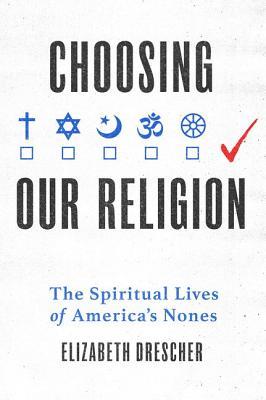
- The market for handbooks, textbooks, and introductions to all kinds of subjects continues to flourish. In this huge flow of production, one can notice additions to literature on new religious movements (NRMs) that are not merely collections of essays already published elsewhere but volumes with original content—and sometimes less usual topics as well. Interestingly, these volumes do not overlap but rather complement each other and thus probably all belong to any serious library on the topic. The earliest one, The Cambridge Companion to New Religious Movements (Cambridge, 2012, $29.99), edited by Oliver Hammer and Mikael Rothstein, contained 18 chapters over 330 pages, covering both themes (among them a chapter on rituals in new religions) and a selection of movements (including an approach to Jihadism as a NRM). Two years later, George D. Chryssides and Benjamin E. Zeller edited The Bloomsbury Companion to New Religious Movements (Bloomsbury, 2014, $39.95) with a different and original concept: a mixture of standard size and shorter chapters (4–5 pages each)—a total of 31 chapters, plus 34 pages of concepts (such as ethics, peace, and syncretism) not dealt with elsewhere in the volume.There are no chapters on individual movements in this volume, but rather themes, including a strong emphasis on research methods and problems regarding various subjects. The introduction traces the emergence of two key themes on NRMs: violence and the advent of the Internet. The editors also insist on the legitimacy of NRMs as a specific field of study despite questions asked about the possible perpetuation of an “unnatural distinction” between NRMs and other forms of religion—but NRMs do in fact differ from other religions, the editors argue. Another volume has now joined the list: The Oxford Handbook of New Religious Movements, Volume II (Oxford University Press, 2016, $150), edited by James R. Lewis and Inga B. Tøllefsen. The mention of “Volume II” is somewhat misleading; it is meant to distinguish this volume from an earlier one with the same title (2004) published by Oxford and edited by Lewis, but they are different volumes and not sequels. Other authors have been invited to write on topics approached in the previous volume—sometimes with young scholars as new contributors.More than 500 pages long, the volume contains 37 chapters, divided in parts from social-scientific approaches to subfields of study; an entire section is devoted to controversy. No chapter is devoted to an individual group alone. A number of chapters deal with topics one would expect in such a volume, offering good, up-to-date overviews. Some chapters, however, approach topics one comes across less frequently in books on NRMs. For instance, Mikael Rothstein has a chapter on a subject that has rarely been approached in a comparative way: hagiography, “the narrative exaltation of sect leaders and heads of new religions.” Jessica Moberg suggests that material perspectives could offer new insights to the study of new religions. “One may, for instance, examine how dress codes and religious objects change over time” or how adherents relate to their history materially (e.g. Scientologists having replicas of L. R. Hubbard’s office in their centers). These examples show how a handbook or general volume can go beyond summarizing what scholars have previously done and offer new perspectives as well. What is absent from all three books is a chapter on the future of new religions.
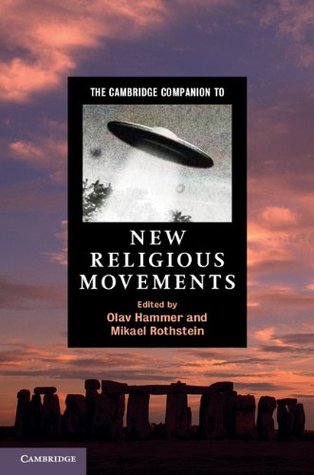
- In introducing Jesuits and Globalization (Georgetown University Press, $32.95), editors Thomas Banchoff and Jose Casanova write that the historical and contemporary experiences of the Society of Jesus can tell us as much about the process of globalization as about the Catholic religious order itself. Almost from the start of the religious order during the Counter-Reformation, the Jesuits claimed the world as their mission field, and the first half of the book looks at how this expansion is fleshed out in history. There have been high and low points in Jesuit globalization; after the order’s expulsion from Europe in the 19th century, the order brought their Catholic international style to the far corners of the earth—with a mixed record of successes and failures—but they reversed course in the more nationalist 1920s and 1930s, only to revive their globalism after the Second Vatican Council.The second part of the book takes up the Jesuit impact in the contemporary period, with engaging chapters on Latin America, Asia, and on such fields as education and immigration. The Jesuit tradition of establishing schools and universities fits well into the globalized world, especially as these institutions create international educational networks and exchanges. The Jesuit campaign for human rights and poverty alleviation in Asia and Latin America is undergirded with the idea of global human development, which has been increasingly recognized by development workers and the United Nations. Casanova’s concluding chapter argues that the Jesuits have been rediscovered by social scientists as a relevant global network that has been able to hold the local and the universal in tension, without exercising exclusive Westernization. Casanova adds, however, that the decrease of Jesuit presence and influence in the West and their growth in Africa and Asia puts them at the periphery rather than at the centers of globalization.
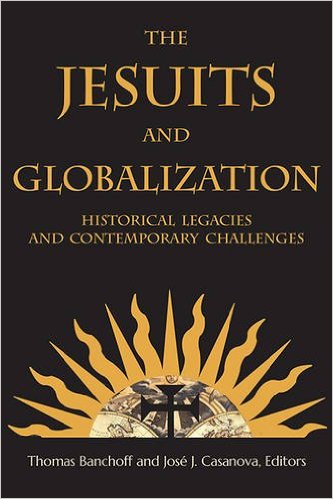
- Published just in time for the Great Council that gathered Orthodox bishops in Crete last month (where it was distributed), the newest edition of the handbook of all Orthodox bishops around the world, Orthodoxia 2016-2017 (Aschendorff Verlag, 20 €), has also been made freely available online. Its editors note that this online version will allow them to update the directory continuously. Orthodoxia was first published in 1982 by the Ostkirchliches Institut Regensburg (Institute for Eastern Churches, located in Regensburg, Germany). It has now become a publication of the Institute for Ecumenical Studies at the University of Fribourg, Switzerland, that also hosts the newly-launched online directory at www.orthodoxia.ch. Bishops are listed by church affiliation (such as the Orthodox Church of Albania, Patriarchate of Alexandria, etc.). In addition to name and address, essential information is also provided for each bishop, when available, such as birthdate, dates of ordination as deacon, priest, and bishop, academic grades, and successive appointments. In addition to Byzantine Orthodox Churches, the directory also includes Oriental Orthodox (i.e. Prechalcedonian) Churches (Armenian, Coptic, Ethiopian, Syriac) as well as the Assyrian Church of the East (so-called “Nestorian”).It does not include Eastern Churches in union with Rome. Although the Macedonian Orthodox Church is currently not recognized by other Orthodox Churches due to its conflict with the Serbian Patriarchate, its bishops are included. Bishops of the two large Ukrainian Churches not in communion with the Moscow Patriarchate are listed in a single category at the end of the volume. A peculiarity of the handbook is that it is probably the only one on an historical communion of churches that is not published by that communion or by one of its constituents. The long-time compiler, Nikolaus Wyrwoll, is a Roman Catholic priest, and the new editors are Roman Catholics as well. The print version is similar in format and color to the Pontifical Yearbook published by the Roman Catholic Church. The fact that non-Orthodox have made such a publication possible since 1982 may also be revealing of challenges faced by Orthodox churches in organizing themselves at a Pan-Orthodox level.
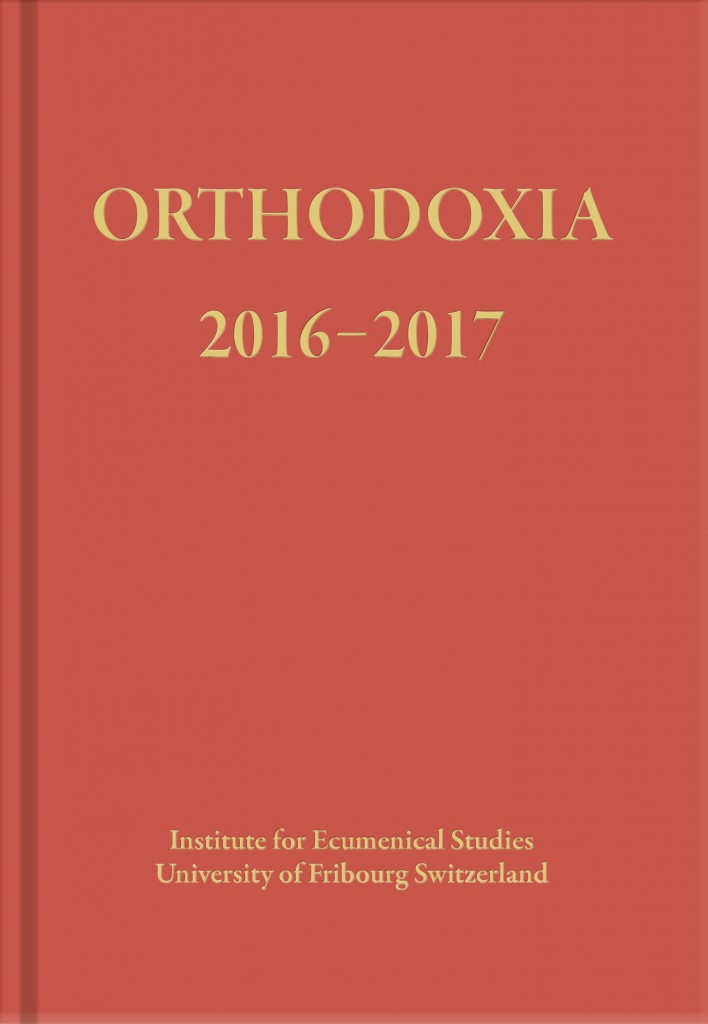
- Religion and Non-religion among Australian Aboriginal Peoples (Routledge, $149) is an in-depth treatment of a topic that on first impression may seem marginal; why give non-religion equal billing with religion when studying the native population of Australia? But as editors James L. Cox and Adam Possamai note in the introductory chapter, the book is an outgrowth of the unusual findings in the 2011 Australian census concerning the increase of non-religion among Australian Aboriginal peoples; between 2006 and 2011, there was a 41 percent increase in the number of Aboriginal Australians in the “no religion” category, whereas for the whole Australian population, the increase was notably less (29.41 percent). As the rest of the chapters show, this trend doesn’t mean that a large part of the Aboriginal population has become atheists and agnostics. In fact, the number of people claiming to be part of Aboriginal Traditional Religion, as well as Islam and Buddhism, showed a marked increase during the same time that the “nones” were on the rise.It is this hybrid and multiple-religious orientation, rather than a romanticized native religious identity, that the census has been unable to capture among Aborigines. The chapter uses data from Google searches to suggest that there is some growth in interest in non-religious views and beliefs among Aborigines, although the author is uncertain if it is “unbelief” in Western religion rather than beliefs in the mold of the “New Atheism” that is occurring. Other interesting chapters cover the way Christianity has been blended with elements of native aboriginal spirituality, such as the use of “songlines,” the importance of dreams in churches (ranging from Lutheran to Pentecostal) and secular life, and the persisting role that churches play in these indigenous communities even among those not claiming a strong religious identity.






